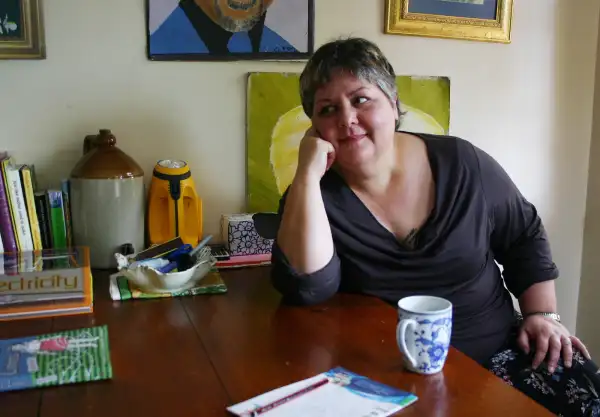Learn how to engage readers with your characters’ dialogue. Here are seven ways you can write believable, purposeful dialogue.
Dialogue plays a major role in much of today’s storytelling. When constructing your scenes, there are several dialogue tips to help you create realistic character interactions that push the plot forward.
Make your dialogue more believable. It shouldn’t sound fictionalised.
- To make dialogue sound natural, pay attention to how people speak around you. Catch fragments of conversations in busy areas, and study the different ways in which people interrupt each other or repeat themselves when they are striking up a conversation.
- Listen to how different people speak: When you have conversations, try to use words and phrases that your characters might use. This is the best way to get your character’s dialogue to sound more natural and credible.
- Believable dialogue also means matching the tone and type of speech to the character. Plan out the direction you want to take with your characters before writing any of their dialogue — this ensures that their verbal exchanges make logical sense. For example, it is unlikely that the local mechanic would speak the Queen’s English, just as it would be unlikely for a barrister to use lots of teen slang.
- Finally, when you’re writing dialogue, it’s important to remember that real conversation isn’t made up of complete sentences that fit tidily into a paragraph for most people. As such, long-winded, uninterrupted dialogue can frustrate readers.
Always introduce speech by a new speaker on its own line.
This extract from Never Let Me Go by Kazuo Ishiguro illustrates this:
‘Tommy,’ I said, quite sternly. ‘There’s mud all over your shirt.’
‘So what?’ he mumbled. But even as he said this, he looked down and noticed the brown specks, and only just stopped himself crying out in alarm. Then I saw the surprise register on his face that I should know about his feelings for the polo shirt.
‘It’s nothing to worry about.’ I said, before the silence got humiliating for him. ‘It’ll come off. If you can’t get it off yourself, just take it to Miss Jody.’
He went on examining his shirt, then said grumpily, ‘It’s nothing to do with you anyway.’
Write compelling dialogue that moves the story forward.
We’ve already said that dialogue must be believable; however, it must also serve a purpose. The dialogue should tell us more about the character, AND move the plot forward.
Don’t waste your dialogue by having characters exchange more than a few lines without adding anything to the story. The extract below is an example of ‘realistic’ dialogue that goes nowhere:
‘Hi there,’ said Susan.
‘Hi,’ said James.
‘So…how are you?’ she said.
‘Okay,’ he answered.
Here’s another very typical, realistic conversation between two young people that makes the same mistake:
‘Like, he was sending off all these really bad vibes, right? And then, like, it was a serious bummer, you know what I mean? So I just sort of, like, told him, man.’
‘Like what did ya say?’
‘Like I told him, you know, like…’
And as it goes on, it gets more boring to listen to and even worse to read!
When you write dialogue, don’t bog the reader down with too much information.
Many new writers use dialogue to tell the reader things the characters already know. Follow this rule of thumb: Never use dialogue to say something when you, the author, might have said it more elegantly, as the following comparison shows:
‘Guess what, Ellen? Our cousin Jenny, who lives in the next street on the corner and is getting married next month to the accountant from her office, is bringing him here for supper tonight.’
The same information sounds more natural if done something like this:
‘Hey, Ellen. Did you know Jenny’s coming over for supper tonight?’
‘By herself, or is she bringing that handsome fiancé of hers?’
‘The accountant? I don’t know. Why not phone and ask her.’
In both conversations, we know that cousin Jenny is getting married, lives nearby and will be joining them for a family meal. But the second example sounds more realistic.
Study creative writing with one-to-one tutoring by an award-winning writer.
4. Keep your dialogue contemporary (unless you are writing historical fiction).
Have you ever noticed how the dialogue in a film can reveal the time period it was created in, or that it is meant to portray? Before 1970, people seemed to speak slowly and clearly, with longer sentences and little interrupting.
Dialogue in older stories is often more stilted, making it feel as if everyone is very uptight. Current speech patterns and dialogue are not the same as they were centuries ago. Have a look at this extract from Jane Austen’s 1813 novel, Pride and Prejudice:
‘My dear Mr. Bennet,’ said his lady to him one day, ‘have you heard that Netherfield Park is let at last?’
Mr. Bennet replied that he had not.
‘But it is,’ returned she; ‘for Mrs. Long has just been here, and she told me all about it.’
Mr. Bennet made no answer.
‘Do you not want to know who has taken it?’ cried his wife impatiently.
‘You want to tell me, and I have no objection to hearing it.’
This was invitation enough.
Now compare Austen’s dialogue with the more contemporary dialogue from Michael Chabon’s 2000 novel, The Amazing Adventures of Kavalier & Clay:
‘Did you tell him you were going to ask Helen to marry you?’
‘Could have.’
‘But you aren’t.’
‘Didn’t.’
‘And she got upset.’
‘Ran into her bedroom and slammed the door. Hit me first, actually.’
‘Good for her.’
‘Sucker punched me.’
‘Ouch.’
And finally, have a look at this piece of dialogue from 2011:
Her arms had a lovely tan, although a scatter of raw pink patches marred the skin above one wrist. Scars. Dolly stared at them. ‘Kitty, are those…’ she faltered. ‘On your arms, are they …?’
‘Burns,’ Kitty said. ‘I made them myself.’
—A Visit from the Goon Squad, by Jennifer Egan
6. Good dialogue avoids dialect
As the following extract shows, dialect can be badly overdone:
‘Arrrh, ‘ee knows summat but ‘eeain’t a- tellin’ the loikes of we!’
An entire page of dialect rendered as phonetic speech like that is unreadable and should be avoided. Readers very quickly become tired of trying to ‘interpret’ speech that is represented phonetically, or with apostrophes everywhere to reflect dropped letters. The trick is to choose one or two words or phrases that will give a taste of what a character’s speech is like. A little bit goes a long way, and sometimes just one line of dialect-driven dialogue is enough to set the tone:
‘Bro, you’re munted as!’ said Herman, ‘What’s going on?’
After that, carry on in standard English and let the reader’s imagination fill in the rest.
That said, the waitress’ casual dialogue in Nancy Fairbanks’s Truffled Feathers needs to be sustained throughout; this is for the sake of consistency and accurate character representation:
‘You’d have to ask the cops. They didn’ tell us. Ask a hunderd questions, don’ answer none.’
Later on the waitress says:
‘Well, it’s not like people don’t get offed in Jersey, too. Ma’s got MS. She thinks someone’s gonna break in an’ tip over her wheelchair. Like anyone would think she’s got anything worth stealin’.
- Good dialogue uses speech tags well.
- The word ‘said’ might sound overused, but ‘said’ and ‘asked’ are best in almost every case; very occasionally, use whispered or smiled. At school, you might have been encouraged to vary your use of speech tags to include ‘demanded’, ‘enquired’, ‘shrieked’, ‘expostulated’, ‘sneered’, ‘giggled’, and the like. Editors, however, frown upon this; keep your writing as simple as you can. Here’s a horrible example of the excessive use of ‘fancy speech tags’ in a dialogue:
‘If my Mom won’t let me go to the disco, I’ll run away!’ exclaimed Joan.
‘I wouldn’t do that if I were you,’ protested Shane.
‘I will if I want to,’ affirmed Joan.
‘Because she’d call the cops,’ continued Shane.
‘She’d never do that,’ declared Joan.
- Moreover, the aim is to even use ‘he said’ as little as possible. It’s simply white noise and you can leave it out. Compare the following two examples:
‘Hi there,’ said Robert, tipping his imaginary hat;
‘Hi there.’ Robert tipped his imaginary hat.
The second example shows how easily you can leave out the unnecessary speech tag
- Get into the habit of describing the action that follows the dialogue, instead of using a speech tag:
‘Give that to me at once!’ She thrust out her hand. (instead of ‘she demanded’)
‘It’s icy out today, isn’t it?’ Alice blew on her frozen fingers. (instead of ‘she shivered’)
‘Help! Help!’ Her desperate plea echoed through the deserted building. (instead of ‘she screamed’)
- When you have two people bouncing conversation back and forth, only mention their names once. After that it should become obvious who is saying what. Here is an example of unnecessary speech tag repetition from The Power by Naomi Alderman:
Kyle gestures with his chin and says, ‘Heard a bunch of guys killed a girl in Nebraska last week for doing that.’
’For smoking? Harsh.’
Hunter says, ‘Half the kids in school know you can do it.’
’So what?’
Hunter says, ‘Your dad could use you in his factory. Save money on electricity.’
’He’s not my dad.’
She makes the silver flicker at the ends of her fingers again. The boys watch.
These are a few of the dozens of tips that we cover in our creative writing courses. If you are struggling with dialogue, plot, characterisation, structure, or any of the elements of creative writing, consider our one-to-one training to iron out any pitfalls in your writing.














